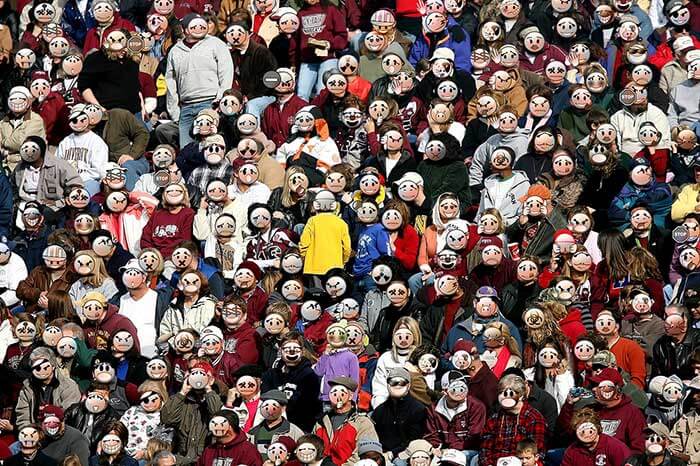In the world of three-letter Internet marketing terms (SEO, SMM, PPC, etc.), CRO might be the most important for you. So, what is conversion rate optimization?
Who doesn’t like to create a cool abbreviation and use it all the time like a pro? Right, it’s easier to say it that way but it also makes you kinda significant and all that. Like you’re doing something important in your own agency.
I’m an “SEO expert,” and that guy’s a “PPC guru,” and that girl over there “does SMM like no one can.” Oh, wait… The last one was a bit over the top, I admit.
However, it’s a different thing with conversion rate optimization (CRO) because it’s a very practical and down-to-earth activity with actual results (or lack thereof). I personally love conversion rate optimization because so much depends on you and your actions and so little depends on the “magic” or “luck” or some “algorithm changes.”
Today I will take you on a trip to ConversionLand, where you can learn more about:
- what conversion rate optimization is
- how you can benefit from doing it for your website
- what are the best ways to start and best practices and techniques
So, strap on your seatbelt as this ride is going to be a tough one.
What Is Conversion Rate Optimization?
There are plenty of conversion rate optimization definitions floating around the Internet – I saved you the trouble of browsing through them all by picking out these two best ones.
In this definition that I have already mentioned in my previous article on the subject (“Conversion Rate Optimization: Where to Start and How to Succeed”), conversion rate optimization is “a system for increasing the percentage of visitors to a website that convert into customers, or more generally, take any desired action on a web page.”
The other definition is simpler and more precise to my liking. It goes as this: conversion rate optimization is “the art and science of getting people to act once they arrive on your website.”
It’s actually easier than it seems – you take a group of visitors to your website and see how well they do what they’re supposed to do, whether it’s signing up to your newsletter, hitting the “Like” button, subscribing, or purchasing something.
The great thing about conversion rate is that it’s a relative indicator meaning the number of people/conversions doesn’t really influence the outcome.
The conversion rate is measured in percent and the formula is as follows:

The number of visitors completing your goal action is also called “conversions.” Say, you had 100 people visit your web page yesterday (100 total visitors) and only 5 out of those people have subscribed to your newsletter (5 conversions).
5/100 = 5%
Congratulations! Your conversion rate is 5 percent, which is not bad at all but that doesn’t mean it can’t get better. This is where optimization comes in.
What we mean by optimization are usually elements of the following:
- graphic design
- copywriting
- content
- user experience (UX)
- psychology
- split testing or A/B testing
By altering one or few of these elements, you’re doing conversion rate optimization.
So, How Do I Do Conversion Rate Optimization?
Remember that proportion I mentioned above? There were two components: numerator (the number on top – conversions) and denominator (the number at the bottom – total visitors).
Therefore, the first thing you need to realize is that there are two directions you can allocate your efforts: visitors and conversion.
Either you start getting more targeted visitors who will show a higher conversion on the same landing page, or you start changing your website (landing page) in order to get a higher conversion from the visitors that are already there. Don’t attempt at doing both things at the same time, though – the result may be quite discouraging 😉
Let’s do a couple of examples.
Conversion Rate Optimization – Visitors

Say, there were 100 visitors to your website yesterday, and the conversion rate was 5%. Cool. Now, does it mean that tomorrow you should expect the same conversion provided nothing else has been changed? No, not at all!
Traffic is a hugely volatile substance. A lot of things can influence the conversion in this case – among them are:
- demographics (age, gender, location, profession etc.)
- time (time of day, day of the week, season etc.)
- traffic source (paid traffic vs. organic traffic)
These factors can contribute heavily to your conversion rate at any given moment. Understanding where your traffic comes from and taking a tight control over its sources and contents can make all the difference for your website.
Here are a few tips:
1. Split Your Traffic by Sources
Use Google Analytics or other analytics tools like MixPanel or use the help of an analyst for that matter to see how many people you’re getting from where. Don’t forget there are mobile visitors too.
E.g. out of your 100 daily visitors:
- 50 visitors came from Google search (organic)
- 30 visitors came from that pay-per-click (PPC) ad you’ve placed recently
- 10 visitors came from your Facebook page by clicking on the link in the post (social media traffic)
- 10 visitors came from that article you posted on a friendly blog (partner traffic).
These three groups of visitors will be different by default as they come from different sources, have a different experience, expectations, and perspective of your website.
2. Calculate the Conversion Rate
For each of these groups to see which one performs better. What if that partner traffic isn’t doing you any good with 0% conversion? You’ve spent a lot of time and effort writing that article and arranging for its publishing – since the outcome is practically non-existent, probably, it’s worth considering eliminating that source of traffic?
Of course, one day may not be enough to draw firm conclusions so take some time to monitor the effectiveness of each of the sources.
3. Think About
How you can improve the remaining, more-or-less effective traffic sources – make a list of ideas on how to increase your conversion rate for of the traffic sources taking their demographics into the account (you will benefit a lot from creating a buyer persona – here’s an article that explains how to do it “How to Create Buyer Persona for Your Business and Get More Clients”). It can be:
- replacing the old ad on Google Ads with a new one
- making a provocative post on Facebook to see if it gets more traction from your subscribers
- optimizing your web page to make it rank higher on the search engine results page (you know, this thing called SEO)
4. Start Implementing
These steps one by one while measuring the conversion to see, which produces better results
Conversion Rate Optimization – Number of Conversions

This is a more obvious one – you’ll have to change one of the elements on your landing or web page that influence your visitors’ decision to take the desired action.
Your options may include:
- change the visual style and elements (design) in order to get a better appeal or emphasize the strong points of your brand
- rewrite the copy – you would be surprised what simple change of call-to-action (CTA) can do to the conversion rate
- change the content (upload a cool self-scrolling picture gallery with delicious images of your products, or shoot a video of yourself explaining the benefits of subscribing, or add some infographics)
- improve UX – remove unnecessary steps like registration or fields like “Your address,” supply your visitors with everything they need to browse your website without being harassed or bombarded with “BUY ME!!!” propositions.
- The art of selling is a quite delicate one – sometimes all you have to do is make people feel comfortable about your website and themselves, and they’ll be happy to do that target action without you nagging them about it.
- Remember what some old wise Asian guy whose name you won’t remember anyway said: “Sometimes the quietest whisper is more powerful than the loudest scream.” That’s a phrase worth quoting, isn’t it?
use known marketing tricks to influence people’s decisions while they’re on your territory (the choice of colors, the sense of urgency, the magic words, the “ridiculous” pricing options and more).
There’s plenty of information for you to read on the subject – just click on this article to do it “12 Creative Tips for Effective Website Conversion Rate Optimization.”
Conclusion
Now, some of you may say – “Hey, man, what about A/B testing and stuff? I run an e-shop here and it ain’t doing no good – gotta do some of that conversion rate optimization.”
You’re right – I’ve intentionally omitted some of the stuff but only to make up for it in the next article!
Thanks for reading!
The right thing to do would be share this article with your friends on the social networks – just click on one of the icons of social media, it’s that easy.
If you have further questions on the subject, please write them in comments – I’ll be glad to answer.
If you’re looking for more good stuff to read, there’s always some on my blog:





Comments0